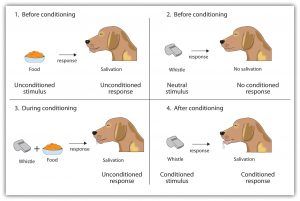Want to create interactive content? It’s easy in Genially!
Learning theories part 1
Jessica Mattner
Created on May 9, 2024
Start designing with a free template
Discover more than 1500 professional designs like these:
Transcript
Learning occurs in the theory by learners generating meaning and understanding in topics and thoughts. The learner needs to take the information given and fully understand the information in order to be able to apply it and remember it. Students are working on their brain executive unctions and their IQ or how they are gaining information. The type of learning best explained in this theory is based on the brain and how the brain is functioning and learning.
The major theoriest associated with this theory is Lev Vygotsky and the learner themselvles. Vygotsky focused on the students intelligence and IQ for how they would learn and grow in school. The characteristics associated with the theory is metacognition and developing executive functioning. Students are developing things like working memory, cognitive flexibility, and regulation of emotions. In this theory memory is very important since the theory focuses on how the brain works, problem solving, creative thinkng, and working memory.
Druvenga, K., (2024). Constructivism. Instructional Coaches Corner. https://www.instructionalcoaches.com/portfolio/constructivism/
The role of memory in this theory is that there are two different types of memory short term and long term. The goal is to get things in short term memory to transfer into long term memory so it can be used ad applied in the futre. In this theory learning occurs by acquisition, transformatio, and evaluation. The types of learning best explained by this theory is moral development and the three stages of it are "preconvential level, convential level, and postconvential level" (Ornstein, A.C., Hunkins, F.p, 2016, p 105).
The major theoriest associated with this theory is Jean Piaget. The characteristics of this theory are looked at through cognitive development in terms of stages of birth to maturity. The stages are "sensorimotor stage age birth 2-7, preoperational stage ages 2-7, concrete operational stage ages 7-11, formal operations stage ages 11 and up" (Ornstein, A.C., Hunkins, F.P., 2016, p 105).
Mcleod, S. (2024). Piaget's Theory and Stages of Cognitive Development. SimplyPsychology. https://www.simplypsychology.org/piaget.html
In this learning theory there is no need for memoriztion. They believed that what you learned could be applied in other situations so you wouldn't have to rote learn or memorize information. In this theory learning occurs by applying behavorial theroies into the classroom. Teachers would use reinforcement and rewards to strengthen the behaviors that are desired, cnsidering extincting by reducing their frequency for undesired behaviors, and withhold reinforcement or ignnore behaviors. The types of learning best explained by this theory is "signal learning, stimulus-response, motor chains, verbal association, concepts, rules, and problem solving" (Ornstein, A.C., Hunkins, F.P., 2016, p 100).
The major theoriest associated with behavorism is Edward Thorndike. The characteristics of this theory is change in using things like reinforcement and rewards to stregthen bheavior. To decrease behavior you can "withhold reinforcemtn or ignore behavior, and take away a privilege or resort to punishment" (Ornstein, A.C., Hunkins, F.P., 2016, p 99).
Thompson, P. (2017). Foundations of Educational Technology. Okstate Library. https://open.library.okstate.edu/foundationsofeducationaltechnology/chapter/2-behavorist-theries-of-learning/
Jessica Mattner
Learning Theories
Bheaviorism
Cognitivism
Constructivism
Write an Awesome Subtitle
Write an Awesome Subtitle
Write an Awesome Subtitle
Contextualize your topic
Structure your content
Contextualize your topic with a subtitle
Concept Map
Write an Awesome Headline
An Awesome Title
An Awesome Title
Interactivity
Animation
An Awesome Title
Creativity
Wow Effect
Magic
Design
Write a great headline
Did you know that Genially allows you to share your creation directly, without the need for downloads? Ready for students to visualize it on any device and learn anywhere.
Visual content is a cross-cutting and universal language, like music. We are able to understand images from millions of years ago, even from other cultures.
Here you can put a standout title
Pose a question or problem that makes the class think; it is the essential ingredient to maintain their attention. It is usually posed at the beginning of the topic to encourage critical thinking and participation.
- Plan and structure your content.
- Give visual weight to key points and main ones.
- Define secondary messages with interactivity.
- Establish a flow through the content.
- Measure the results.
Write a great headline
Did you know that Genially allows you to share your creation directly, without the need for downloads? Ready for students to visualize it on any device and learn anywhere.
Visual content is a cross-cutting and universal language, like music. We are able to understand images from millions of years ago, even from other cultures.
An awesome presentation...
- Is clear and structured.
- Presents information in an organized manner.
- Engages the entire class.
- Adapts fonts and color to the theme.
- Includes images and entertains.
- Uses timelines.
- Is animated and interactive.
- Does not overuse bullet points.
Write a great headline
Our brain is biologically prepared to learn through visual content. Almost 50% of our brain is involved in processing visual stimuli.
We are in the era of the digital information explosion. This causes our way of obtaining information to have changed, we have transitioned from traditional reading to a cognitive strategy based on navigation.
Here you can put a standout title
Pose a question or problem that makes the class think; it is the essential ingredient to maintain their attention. It is usually posed at the beginning of the topic to encourage critical thinking and participation.
- Plan and structure your content.
- Give visual weight to key points and main ones.
- Define secondary messages with interactivity.
- Establish a flow through the content.
- Measure the results.



